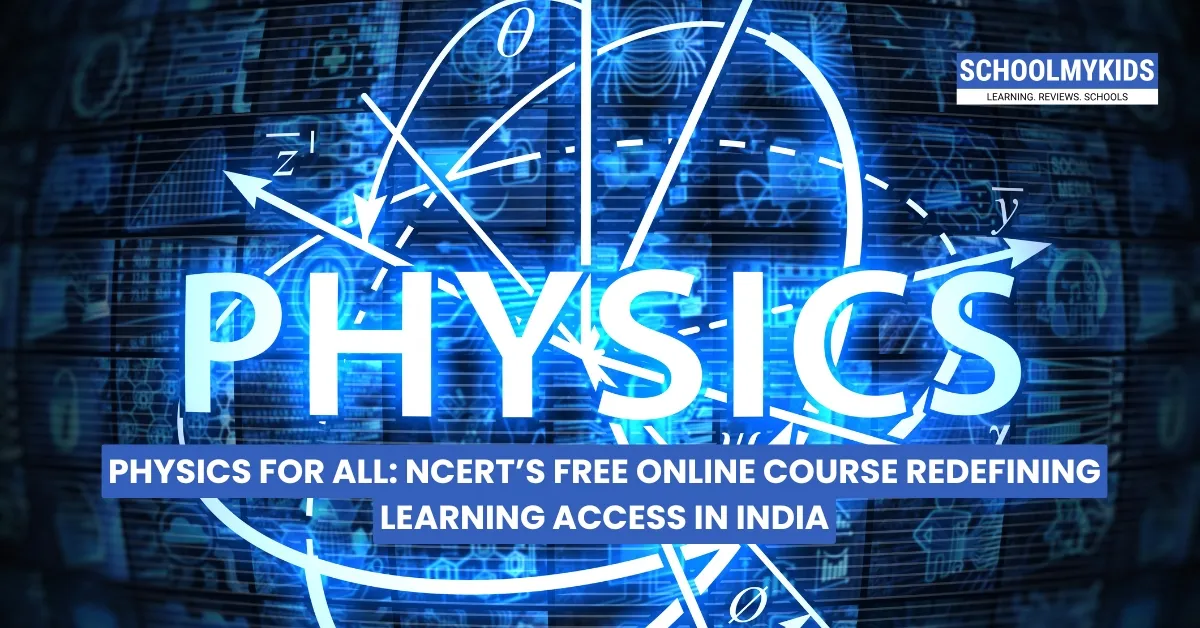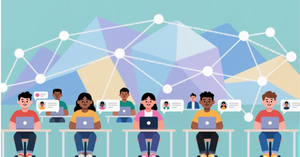Education is supposed to be the great equalizer, yet in most parts of the world — including India — it’s a mirror reflecting inequality more than erasing it. In a country where over 250 million students are enrolled in schools but quality and access vary wildly between urban and rural classrooms, the idea of “free, high-quality, accessible education” often sounds more like an aspiration than a reality. That’s where NCERT’s new initiative — “Physics for All,” a free online course — quietly steps in, reshaping not just how students learn, but who gets to learn.
Schooling vs. Education: A Subtle but Crucial Divide
Before diving into this reform, it’s worth pausing on a distinction that society often blurs: schooling and education. Schooling is the system — the rigid schedules, the exams, the report cards. Education is the process — the spark that ignites curiosity, the ability to think critically, the pursuit of understanding. India’s traditional schooling, like much of the world’s, has long prioritized uniformity over individuality. But the digital age is prying those two apart, forcing us to rethink what it means to learn.
From Industrial Roots to Intellectual Freedom
Modern schooling was born in the Industrial Revolution, designed to produce disciplined workers for factories — punctual, obedient, and literate enough to follow instructions. The model stuck. Desks in rows, bells marking time, standardized curricula — all relics of an age when conformity was efficiency. But in the 21st century, creativity and adaptability matter more than compliance. The challenge now isn’t teaching students to memorize Newton’s laws — it’s teaching them to apply those laws in a world driven by innovation.
The Current System: Success by Numbers, Not by Knowledge
Today’s education system still measures achievement through marks, rankings, and exam cut-offs. In physics, for example, success is often reduced to formula recall rather than conceptual grasp. Access is another battle: while metropolitan students enjoy coaching institutes and lab facilities, millions in rural India struggle with outdated textbooks and limited teacher availability. That’s what makes NCERT’s “Physics for All” radical — not just because it’s online, but because it dismantles barriers that once defined who could afford to learn deeply.
The Crisis: Rote Learning, Burnout, and Broken Curiosity
Let’s be honest — the average Indian student’s relationship with physics is one of fear, not fascination. The obsession with exam performance has suffocated curiosity. Students memorize derivations they don’t understand, solve numerical problems without context, and equate grades with intelligence. The emotional toll is immense: academic pressure is now one of the top causes of student anxiety and dropout rates.
Teachers, too, are caught in the same machinery — underpaid, overworked, and bound by outdated syllabi. Technology, in theory, promised to bridge these gaps, but uneven access and poor digital literacy often created new divides instead.
Innovation in Action: NCERT’s “Physics for All”
This is where “Physics for All” changes the equation. The initiative, launched by NCERT under the Ministry of Education, offers free online physics modules for classes 11 and 12, covering both foundational and advanced topics through interactive videos, virtual labs, and bilingual content.
Unlike traditional classroom teaching, these courses are self-paced and application-oriented, encouraging students to explore concepts rather than memorize them. The platform integrates AI-based doubt-solving, visual simulations, and real-world problem sets — bringing to life ideas that textbooks alone could never animate.
More importantly, it’s accessible to anyone with an internet connection — whether a student in Delhi or a teacher in rural Assam looking to upgrade their own knowledge.
Promise and Pitfalls
Digital education has its glowing side — flexibility, personalization, inclusivity. But it also raises concerns: what happens to students without stable internet? Can an online course replace the mentorship of a passionate teacher? Will we trade one form of standardization for another — algorithmic instead of bureaucratic? Reform, if it’s to mean anything, must balance technology with humanity. NCERT’s effort succeeds in democratizing access, but true transformation will depend on how these digital tools integrate with classroom teaching, not replace it.
Beyond Curriculum: The Real Purpose of Learning
At its heart, “Physics for All” hints at a bigger question: What is the purpose of education in an age where information is free? If the 20th century was about memorizing facts, the 21st is about understanding systems — physical, social, digital, and ethical. The goal isn’t to produce engineers who can solve problems by formula, but thinkers who can ask why the problem exists in the first place.
An “educated” person today isn’t just one who knows physics — but one who can connect it to climate change, technology, or human wellbeing.
Rethinking the Future of Education
NCERT’s initiative is not just an online course — it’s a symbolic step toward a more open, inquiry-driven education system. It reflects a slow but meaningful shift from learning to score to learning to understand. As India’s classrooms evolve — whether physical or virtual — the challenge will be to ensure that access and quality grow hand in hand.
Conclusion: From Fear to Fascination
If the purpose of schooling was once to discipline the mind, the purpose of education now must be to liberate it. “Physics for All” represents a glimpse of that freedom — where a student in a small town can explore the mysteries of the universe without a price tag or a classroom ceiling.
Perhaps the future of education isn’t about teaching everyone the same thing — but about giving everyone the freedom to discover what learning means to them.
And maybe, just maybe, that’s how we turn physics — and education itself — from something we have to learn into something we love to learn.









Be the first one to comment on this story.